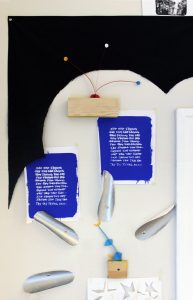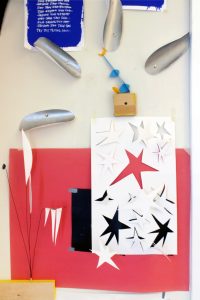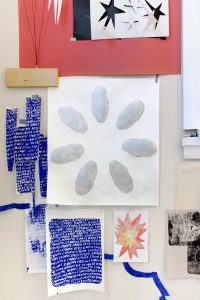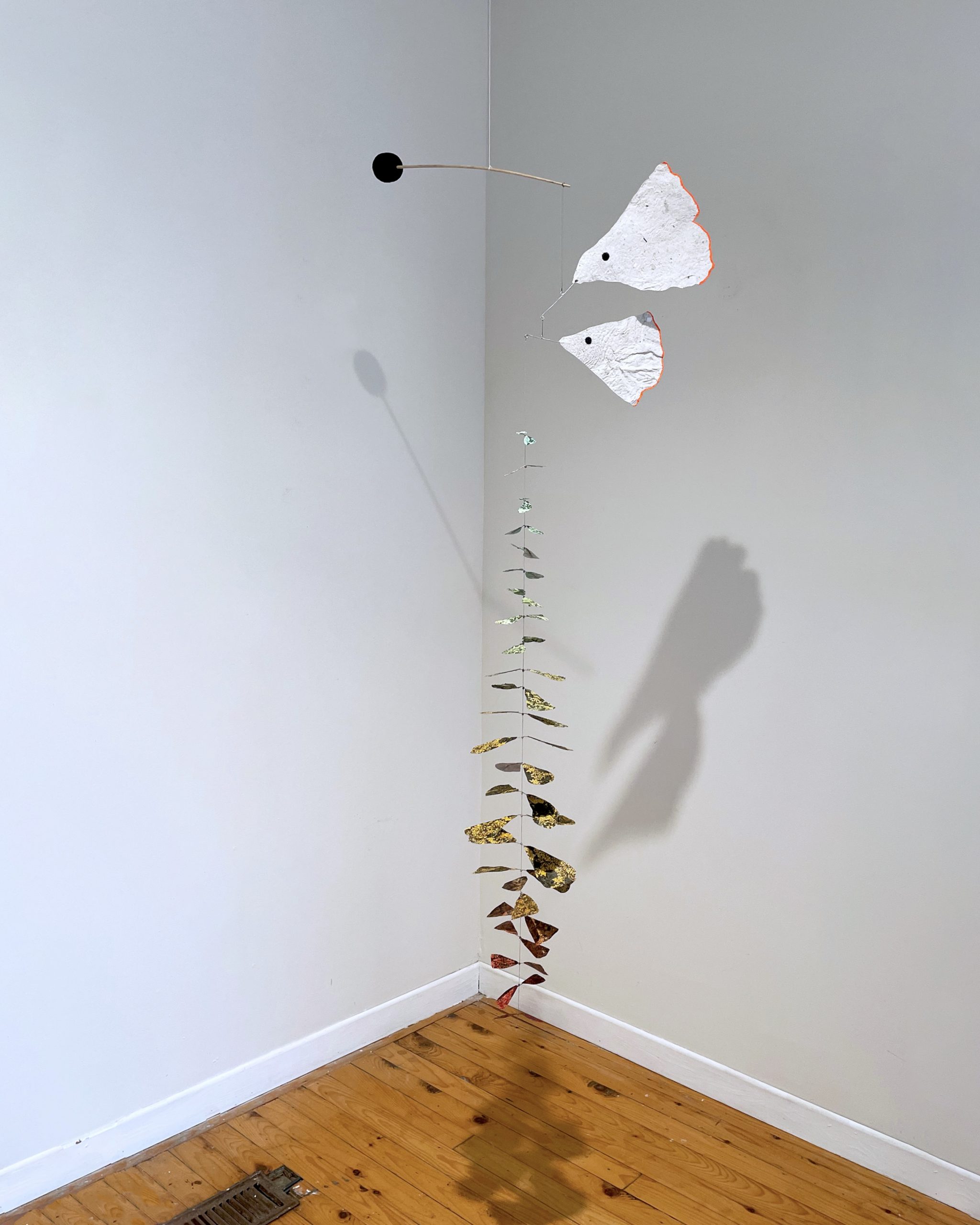
Tuning Tethers (2023) Handmade Paper Mobile

Tuning Tethers (2023) Handmade Paper Mobile
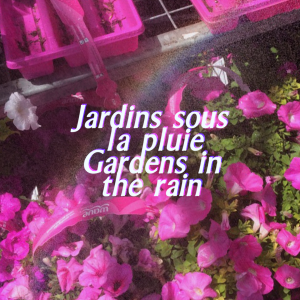
Jardins sous la pluie / Gardens in the Rain (12:31)
Claude Debussy and B Mosher
2023
Samples of ultrasonic Plant soundings, and MIDI Score of Estampes Nr.3 (Jardins sous la pluie)
Plants can emit species- and stress-specific ultrasonic sounds that can help us identify plant health. This discovery was published in the March 2023 issue of Cell by researchers at Tel Aviv University and expands our understandings of bioacoustic signalling in plants.
Jardins sous la pluie / Gardens in the Rain samples these sort of ultrasonic sounds, mapping them onto a rendition of Claude Debussy’s Estampes Nr. 3 as played by Katsuhiro Oguri, released in an open source MIDI musical score. In this work a tomato plant’s staccato “blops” sound becomes a chorus of plants blopping out Debussy’s harmonic ode to lush garden rainfall.
To have allow the composition to speak back to plants the melody has been pitched back up to the hypersonic frequencies plants sound in. It also has been pitched down to subsonic frequencies below most human hearing, frequencies which plant roots have been known to relay signals through.
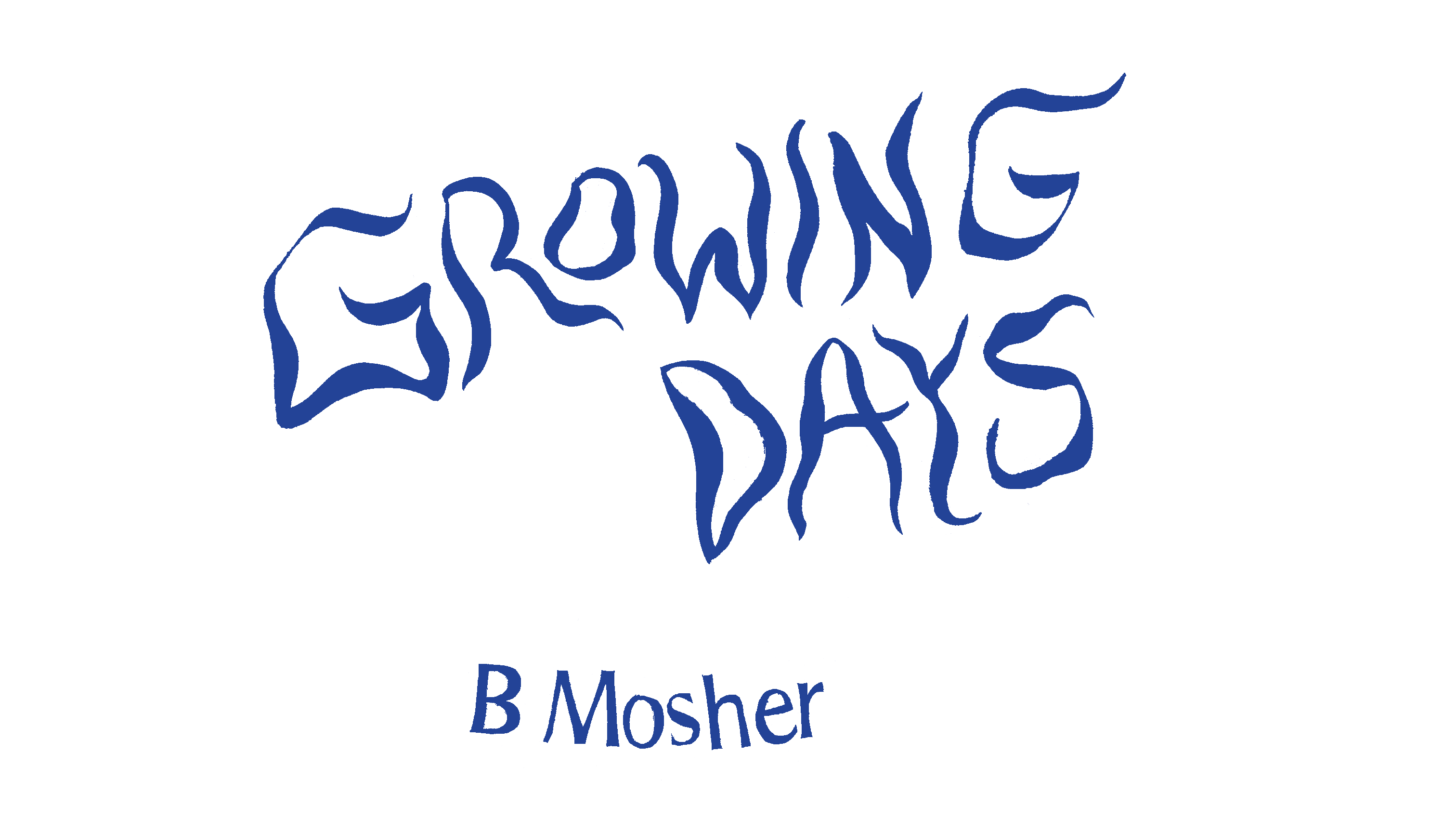

Growing Days ponders the effects of periods of exponential growth have had on their personal histories. Growing days mark out time between moments of intense activity, followed by a deep need for rest. The implications of these swinging cycles of fluctuations are felt, not only personally but culturally and ecologically. From the personal learning curve that is a part of gaining new skills like baking, to the frothy optimism of economic interests in verging markets, catching us up in the currents of swells and breaks.

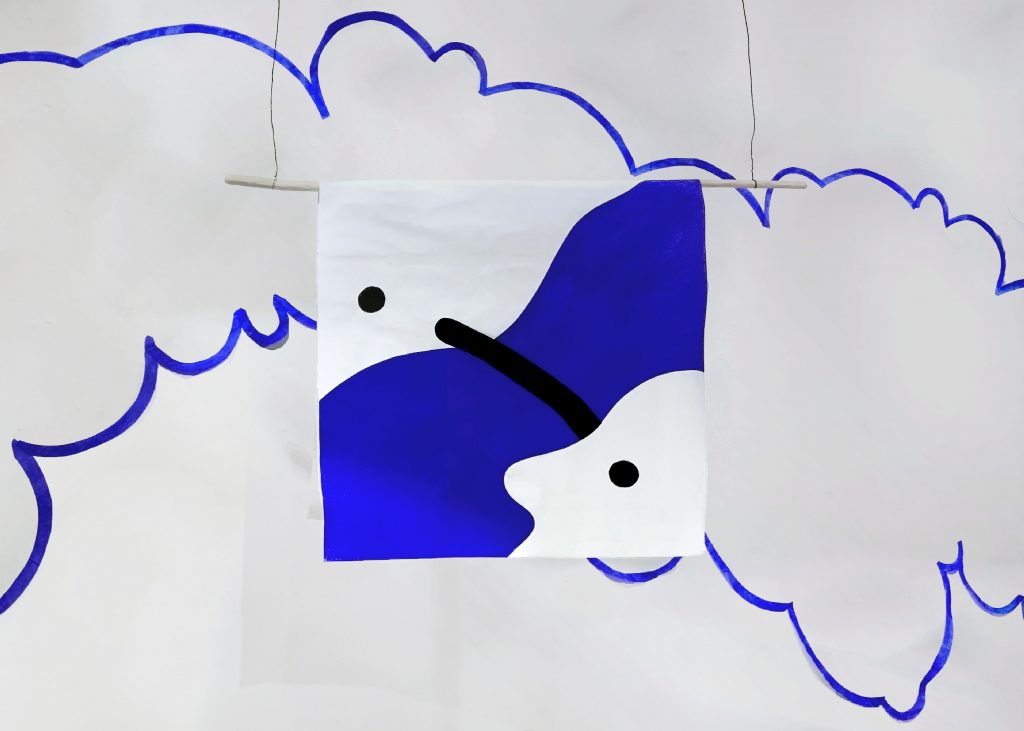

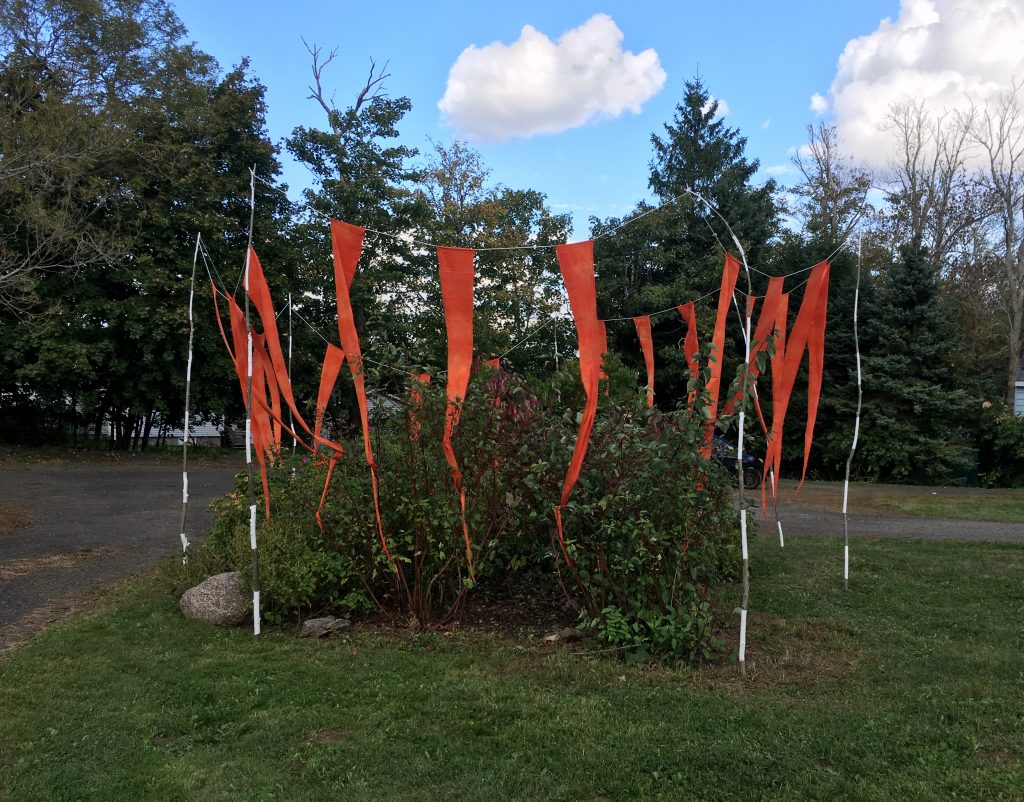
When a barrier draws attention to itself, it might be because we should be careful of what dangerous or fragile thing it is guarding. Garden stakes mark vulnerable shoots with distinctive makers, acting as supportive bollards buffering careless feet and anchoring them as they shoot up towards the sky.
My work WaitWaitWaitWaitWaitWaitWait uses excessively tall bollards hung with colourful cotton bunting to guard the garden at ARTSPLACE. 21 ten-foot-tall banners encircle the bushes and roses. Each hangs from 7 twelve-foot poplar bollards. The banners are a bright high-vis red-orange, marking the outline of the garden’s perimeter. The fluttering banners encourage stopping, waiting, perhaps taking the time, opening curiosity.
WaitWaitWaitWaitWaitWaitWait makes room for this pause, drawing attention past itself and onto the garden it is made to care for. To defend ARTSPLACE’s garden, WaitWaitWaitWaitWaitWaitWait creates a permeable barrier, filtering the view of the roses and bushes. If this small friction intrigues passers-by, I hope they search for what is worth defending. Caring is contagious. Pausing and waiting for a moment passes this practice on to ourselves allowing for a momentary rest.

B Mosher has been tinkering with a series of lighthearted poetical drawings and playful sculptural pieces. This work often exists between a spectrum between cloudedness and clarity. bartly qartly partly is a chance to playfully arrange these graphic drawings and simple kinetic sculptures for show. The work found in bartly qartly partly is often unstable and light. They remain precariously nimble, needing to constantly recalibrate to the forces around them.
Though they did not realize it then, B’s practice of making quick doodle-like drawings and delicate, vulnerable sculptural works would become an affirmative and stabilizing practice throughout the swell of the pandemic reality. Surrounded by a fog of unknowable precarity, they kept their hands busy, working their creative practice into knots.
